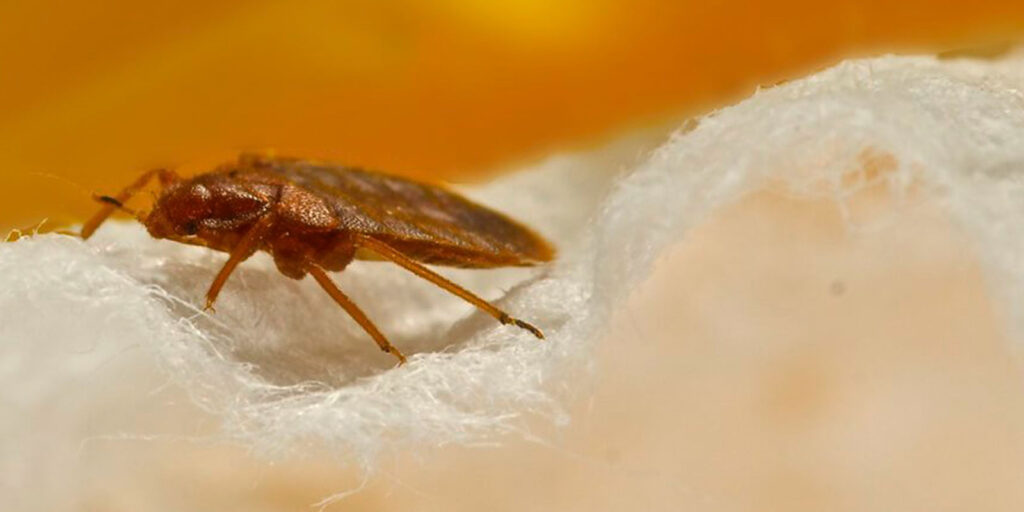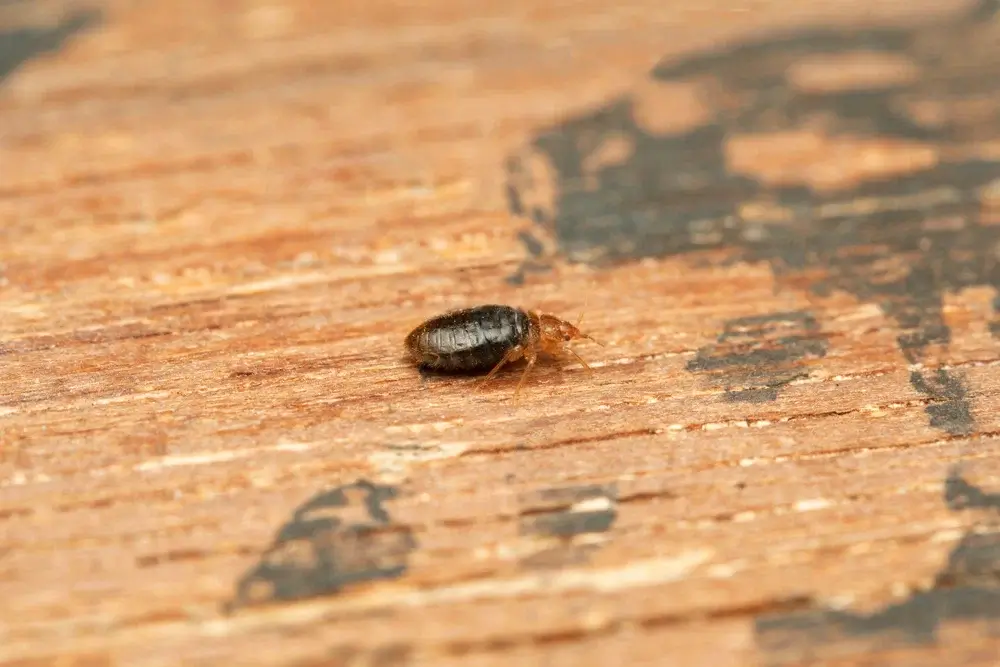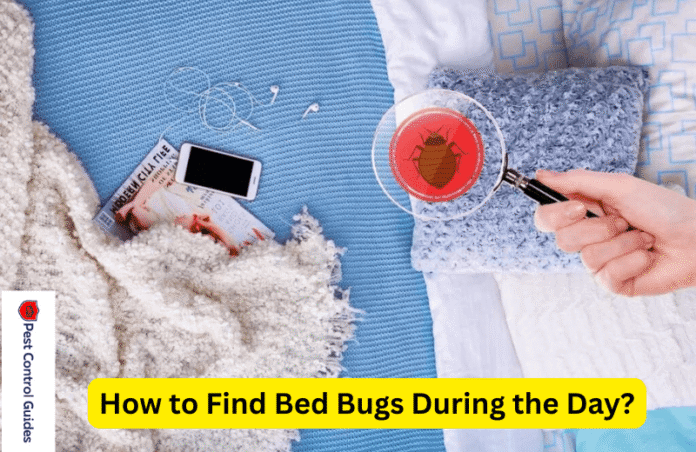Bed bugs are tiny but troublesome pests that can hide in the smallest spaces in your home. Finding them during the day can be tricky since they prefer to come out at night. But catching them early is key to controlling an infestation before it gets out of hand. This guide will walk you through ways to check for bed bugs, including bed bug hiding spots.
Taking steps to find bed bugs during the day can help protect your home and family while saving you costly extermination efforts later.
Why Is It Hard to Find Bed Bugs During the Day?
Bed bugs are small, about the size of an apple seed, and excellent at hiding. They tuck themselves into cracks, seams, and folds to avoid detection. Plus, they are nocturnal, meaning they are most active at night when you’re sleeping.
But don’t worry, you can still find them during the day if you know where to look and how to check. Read our latest post on How to Tell if you Have Bed Bugs in Your House?
Can You See Bed Bugs in the Daytime?

Yes, you can. Although more challenging to spot, their small, flat bodies allow them to hide even in tight spaces. Using proper tools and techniques will make it easier to locate them.
Effective Ways to Find Bed Bugs
Let’s discuss 11 effective ways to check for bed bugs during the day:
1. Use a Flashlight
A flashlight is one of the most important tools for finding bed bug hiding spots. Shine a bright flashlight into dark areas like mattress seams, furniture joints, and cracks in walls. Bed bugs are often well-hidden in these spaces, and a beam of light can reveal their presence.
Focus on areas close to where people sleep, as bed bugs typically stay within a short distance of their food source. 2 weeks ago, we published a complete guide on How Much Does it Cost to Get Rid of Bed Bugs? 2025 Pricing Guide
2. Check Cracks and Crevices
Bed bugs can squeeze into spaces as narrow as a credit card. Use a thin tool, like an old credit card or folded piece of paper, to probe cracks in furniture, walls, and baseboards. Slide it along crevices to disturb any hiding bugs.
Pay special attention to gaps in wooden furniture and the edges of the carpet, as these are popular hiding spots.
3. Bed Bug Traps
Bed bug traps are highly effective for detecting their presence. Interceptor traps, which are placed under furniture legs, can catch bed bugs as they crawl around. Glue traps and CO2 monitors are other good options.
These traps give you visual confirmation of bed bugs and can be used to monitor their activity over time.
4. Bed Bug Sniffer Dog
If you suspect an infestation but can’t seem to find the bugs, a trained sniffer dog can help. Dogs are highly skilled at detecting the scent of bed bugs, even when they’re hidden in hard-to-reach areas. This method is quick and reliable, with some trained sniffer dogs having a detection accuracy of over 95%!
5. Inspect the Bed Frame
The bed frame is one of the most common hiding places for bed bugs. Carefully check all corners, joints, and crevices of your bed frame. Use a flashlight to spot live bugs, eggs, or tiny black stains (their droppings). If your bed frame is made of wood, pay extra attention, as bed bugs love to hide in the cracks.
6. Check for Blood Stains
Small blood stains on your sheets or mattress are often a sign of bed bugs. These stains might be caused by accidentally crushing a bed bug while sleeping or by their bites. Take a close look at your bedding, especially along the edges where bed bugs are more likely to crawl.
7. Check the Headboard
Don’t forget the headboard, it’s another favorite hiding spot for bed bugs. They often hide in the gaps and seams of wooden or fabric headboards. Remove the headboard from the wall and inspect the back, paying close attention to any cracks or joints.
8. Search the Couch
Couches are often overlooked, but they can be a prime hiding spot for bed bugs. Check the seams, cushions, and underside of your sofa. Shine a flashlight inside any cracks or gaps in the frame. If you regularly nap on the couch, there’s an increased chance that bed bugs may hide there.
9. Inspect Other Furniture
Beyond the bed and couch, inspect other pieces of furniture in your home. Bed bugs can live in nightstands, dressers, and even cabinets. Use a flashlight to check inside drawers and along joints. Pay attention to upholstered furniture, especially around seams and zippers.
10. Look for Shredded Skins
Bed bugs shed their skin multiple times as they grow. These shed skins are often light brown and can be found in areas where bed bugs hide. Check for clusters of shredded skins near mattresses, headboards, and furniture cracks. Finding these can confirm an active infestation.
11. Detect Unpleasant Odors
A strong, musty odor in your room could indicate the presence of bed bugs. When large groups of bed bugs are hiding together, they release a chemical smell that some people describe as similar to spoiled strawberries. If you notice this unusual scent in your bedroom or living space, inspect for bugs immediately. Follow Us on Facebook, Pinterest and Twitter for the latest updates.
What to Do If You Suspect Bed Bugs But Can’t Find Any
You might not always see live bugs, especially during a small infestation. However, you can:
- Continue using traps to confirm their presence.
- Wash bedding and clothing at high temperatures.
- Consult a professional pest control expert for a thorough check.
Read Our Most Recently Published Guides on Termites, Earwigs, Fruit Flies, Ants Control, Baby Termites, Carpenter Ants and Gnats:
- What Do Bed Bugs Look Like?
- Early Signs of Bed Bugs on Mattress? Explained in 2025
- Skin Early Signs of Bed Bugs? Identification, Prevention
- Tiny Baby Termites? Everything You Need to Know in 2025
- What Do Baby Termites Look Like? Termite Identification and Treatment in 2025
What Kills Bed Bugs Permanently?

Getting rid of bed bugs can be challenging. Here are some effective solutions:
- High heat (use a dryer for clothes or professional heat treatment for rooms)
- Freezing items for several days
- Professional-grade insecticides (always follow labels carefully)
Integrated Pest Management (IPM), as suggested by the EPA, combines these methods for the most effective results.
Conclusion
Dealing with bed bugs can be a challenging and stressful experience, but with the right approach and tools, it is possible to eliminate them and protect your home from future infestations. Identifying the problem early, using proven treatments, and seeking professional help when necessary are crucial steps in addressing the issue effectively. By staying vigilant and proactive, you can ensure a clean, safe, and comfortable living environment for you and your family.
Read our latest guides on different kinds of home living insects:
- Baby Termites vs Ants? How to Tell the Difference
- Fungus Gnats vs Fruit Flies: How to Tell the Difference in 2025
- Do Fruit Flies Bite: How to Identify and Get Rid of Them at House
- Drain Flies vs Fruit Flies: How to Tell the Difference in 2025
- Where Do Gnats Come From in the House? Prevention and Treatment Tips
- How to Get Rid of Gnats in House Quickly? Step by Step Process
- Why Are There Earwigs in My House? Prevention and Treatment Guide
- How to Get Rid of Earwigs in Your House Fast?
FAQs
How to Check for Bed Bugs in the Day?
Use a flashlight to examine mattress seams, furniture joints, and cracks in walls. Look for live bugs, eggs, or signs like black stains.
What if I Think I Have Bed Bugs but Can’t Find Any?
Call a professional pest control expert. They can perform a thorough inspection using tools like trained bed bug-sniffing dogs.
How to Prevent Bed Bug Bites While Sleeping?
Use protective mattress covers, and keep your pillow and linens clean. Bed bugs are less likely to bite if your bed is free of clutter.
What Smell Do Bed Bugs Hate?
Strong scents like lavender, tea tree oil, or peppermint can repel bed bugs, though they likely won’t eliminate an infestation.
Will Sleeping with Lights on Stop Bed Bugs?
No, sleeping with lights on won’t stop them. Bed bugs are willing to come out if there’s food available, regardless of the light.
What Can I Put on My Skin to Keep Bed Bugs from Biting?
Some people use natural oils like coconut oil, but these are only temporary solutions. Addressing the infestation is the ultimate fix.
What Kills Bed Bugs Permanently?
Professional heat treatments or EPA-approved pesticides can eliminate them. Severe infestations may require expert intervention.



